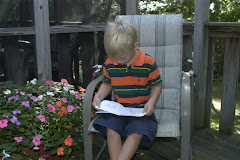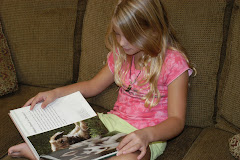Wiggling
Lamb states the purpose of the wiggling element is to use and evaluate information resources. By skimming and scanning information, I build a scaffolding structure uniquely designed to meet my topic focus. Callison notes, “As the scaffolding is built higher, the skill set may become both more complex and more refined or precise” (The Blue Book, p. 524). My first level of progressive scaffolding is to establish criteria for evaluating sources.
Stripling illustrates inquiry-based application by using scaffolding. According to Stripling, “Students should assess the value of a source before they even look at the specific information within a source” (Curriculum Connections, p.26). Stripling recommends that sources must meet specified criteria:
Authoritative of author/publisher, comprehensiveness of information, organization and clarity, and quality of references. Additionally, Stripling advises that an essential strategy evaluates specific information and selects supporting evidence. Sources should substantiate point of view or provide a balanced perspective (Curriculum Connections, p. 26). With these specific guidelines, I categorize resources after hours of reading, searching, and sifting.
My selected resources based on Stripling’s criteria:
1. Professional Organizations
International Reading Association (IRA) http://www.reading.org/
National Council of Teachers of English (NCTE) http://www.ncte.org
National Reading conference (NRC) http://nrc.oakland.edu/
2. National Research & Development Centers and Federally Funded Projects
Center for the Improvement of Early Reading Achievement (CIERA) - http://www.ciera.org/
Center on English Learning and Achievement (CELA)- http://cela.albany.edu/
National Reading Panel (NRP) - http://www.nationalreadingpanel.org/
The Reading Pathfinder (RP) - http://www.readingpath.org
National Institute for Literacy (NIFL)- http://www.nifl.gov/
3. Indexes and Abstracts
Academic Search Premier. EBSCO Industries, Inc., 2007.
ERIC. EBSCO Industries, Inc., 2007.
Education Full Text. The H.W. Wilson Company, 2007.
Education: ASAGE Full-Text Collection. ProQuest-CSA LLC, 2007.
CSA Linguistics and Language Behavior Abstracts. ProQuest-CSA LLC, 2007.
WorldCat (OCLC), 2007.
4. Lesson Plans and Teaching Methods
AskERIC Lesson Plans and Resources - http://ericir.syr.edu/Search/simple.shtml
The Gateway to Educational Materials: Language Arts Lesson Plans http://www.thegateway.org/SubjectBrowse.htm#language_arts
Internet School Library Media Center's English/Language Arts Lesson Plans http://eric.indiana.edu/www/home/litedres.shtml
Reading Rockets (National multimedia project) - http://www.readingrockets.org/
5. Internet Sources
Children’s Literacy Initiative - http://www.cliontheweb.com/index-main.html
America Reads - http://www.nwrel.org/ecc/subcontracts.htm
Indiana Department of Education - http://www.doe.state.in.us/
Literacy Web Homepage (Grades K-2) - http://www.literacy.uconn.edu/k2home.htm
North Central Regional Education Laboratory - http://www.ncrel.org/sdrs/areas/issues/content/cntareas/reading/li100.htm
Institute for Education Reform - http://www.csus.edu/ier/reading.html
The Hood Children’s Literacy Project -
http://www.lesley.edu/academic_centers/hood/index.html
Sunday, September 23, 2007
Subscribe to:
Post Comments (Atom)



1 comment:
Hi Teresa. I just checked to see how your project was going because I ran across several great resources from some of the poeple I work with and I thought I'd share but you already have my favorites in there. Reading Rockets is a fun site.
The ALA also has a site we use a great deal at ACPL for Every Child Ready to Read. I had a workshop on this recently and it was great.
http://www.ala.org/ala/alsc/ECRR/ECRRHomePage.htm
Post a Comment